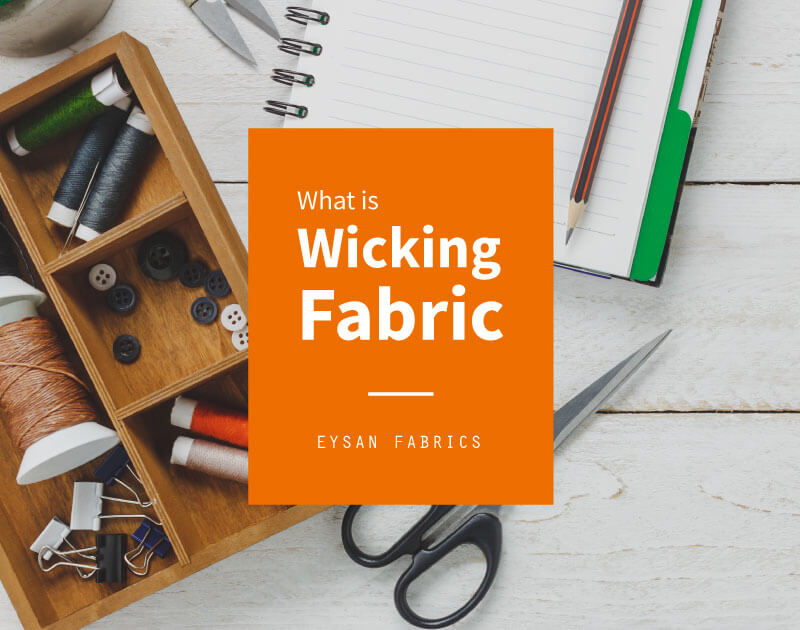
Fabric shrinkage has the potential to ruin your garments. And leave you with very unhappy customers.
But what is fabric shrinkage? And what can we do to prevent it? Read on to find out everything you need to know…
What is fabric shrinkage?
Fabric shrinkage is simply the extent to which a piece of fabric changes in length or width during the laundry process.
Why do we need to test fabric shrinkage?
We need to know how much a fabric is liable to shrink for a number of reasons.
Firstly, manufacturers need to know that the fabric or garments they are producing are of excellent quality.
There’s brand reputation to think of. And also the wasted materials and energy involved in having to remake things because fabric has shrunk at a late stage in garment production.
Secondly, if a fabric shrinks after it has been cut or sewn, the finished garment will be misshapen. Seams might end up puckered. And the hang of a garment will be affected.
Lastly, manufacturers need to provide care labels telling consumers how to look after their garment. Without a fabric shrinkage test, the information on these labels will not be accurate.

What makes fabric shrink?
There are a number of factors affecting shrinkage in fabric:
The raw material.
Different fibers naturally absorb different levels of moisture and react differently under heat. This is a big factor in fabric shrinkage.
In normal use, fabrics with a low shrinkage rate include synthetic fibers and blended fabrics.
The next best is linen.
In the middle, you get cotton fabrics, which shouldn’t be washed or dried at high temperature.
And at the other end of the scale, the fiber most affected by shrinkage is viscose.
A few other things to consider… Fabric that includes spandex has a higher shrinkage rate than fabrics that don’t include spandex. And dry cleaning is the best method for woollen garments as they are particularly prone to shrinkage.

The production method.
The way in which a fabric is produced can also affect its shrinkage rate. Weaving, dyeing and finishing processes all make a difference.
For example, woven fabric shrinks less than knitted fabric. And the tension of the fabric during production impacts how it reacts when washed and dried.
The density of the fabric and the thickness of the yarns also play a part in shrinkage. And fabrics can undergo processes that help to prevent shrinkage, as we’ll see later.
How to do a fabric shrinkage test?
There are a few standard, internationally recognized, shrinkage test methods; AATCC 135, AATCC 158 and ISO 3759.
These tests can be conducted at an authorized laboratory in a factory. Alternatively they can take place at a third party lab, like SGS or Intertek, which would incur an additional fee.
But you don’t need lots of expensive equipment to do a fabric shrinkage test. It’s possible to do a simple but effective shrinkage test right at home.
DIY fabric shrinkage test
To do a fabric shrinkage test at home you will need:
- A washing machine
- Detergent
- A fabric swatch
- An oil-based fabric marker
- A shrinkage scale (This isn’t essential but it will help to produce more accurate markings)
- A ruler or tape measure
Then follow these steps:
- Prepare your fabric for testing. Cut a swatch that measures 110cm x 110cm.
2. Mark a square of 100cm x 100cm on your swatch by putting + in each corner. If you have a shrinkage scale, use this now to make your markings more accurate.
3. Wash and dry the fabric swatch as required.
4. Lay your fabric swatch on the table, being careful not to stretch it. Measure the length and width of the swatch according to the marks you made. Write down these figures.
How to calculate fabric shrinkage?
Once you have your length and width measurements, you can calculate your fabric shrinkage rate using the equations below.
Weft Shrinkage
(weft length after wash – weft length before wash) ÷ weft length before wash x 100%
Warp Shrinkage
(warp length after wash – warp length before wash) ÷ warp length before wash x 100%
Or you could also use the online calculator to help you.
If you get a negative value, your fabric has shrunk. In some cases, you may get a positive value. This means your fabric has grown.

How to prevent fabric shrinkage?
There are a few fabric processing techniques that can be used to reduce the rate of shrinkage in fabric.
Mercerization and preshrunk are a few examples. These processes are mainly used on cotton fabric.
Synthetic fibers, like nylon, often shrink when heated. But shrinkage can be reduced if fabrics are heat-set during production.
Nevertheless, it’s unrealistic to expect a zero shrinkage rate. Whatever fabric you’re using and whatever processes it goes through, there’s almost always some degree of shrinkage.
There is always a tolerance. And the level of tolerance largely depends upon the kind of material you’re using.
We hope you found this article useful. Check out our blog for more fabric knowledge and industry news. Here are two of the articles you might be interested in:

Yarn, Piece or Solution Dyed Fabric?
Which dyeing method should you choose? Is yarn, piece or solution dyed fabric best for your product? Find out the key differences between these fabric dyeing methods.

What is Wicking Fabric? How Does it Work?
Sourcing material for outdoor or sports clothing? Chances are you’ve come across the phrase “wicking fabric“. But what is this stuff? How does it work?
Want to know more about EYSAN? Or looking for fabric advice?

Eysan Fabrics
Eysan is a knitted fabric expert. Since 1986, it has continually supplied quality fabrics and service to clothing manufacturers and well-known clothing, athletic, and underwear brands. If you have any questions regarding knitted fabrics or have any knitted fabric needs, please feel free to reach out to us.


